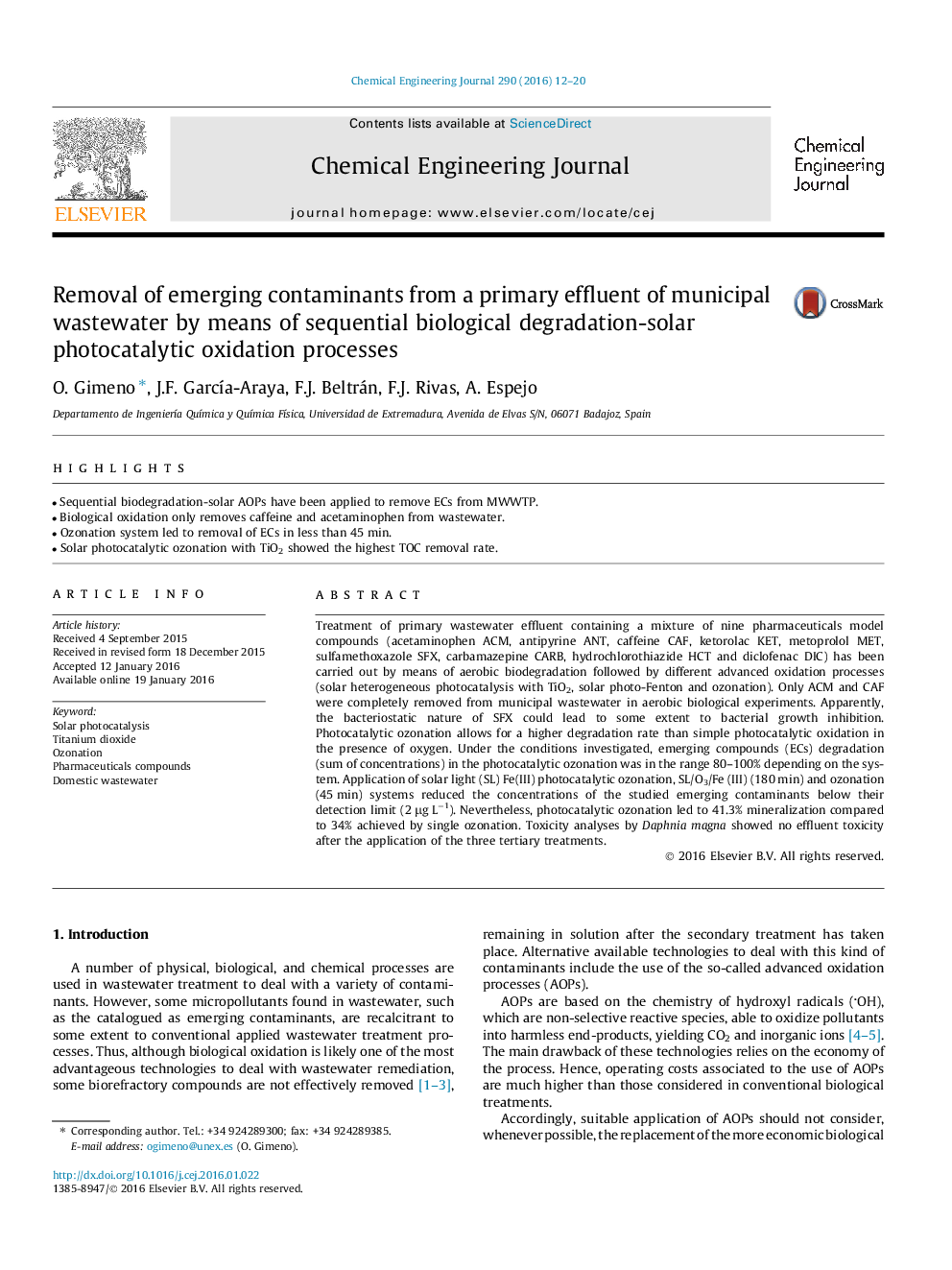| کد مقاله | کد نشریه | سال انتشار | مقاله انگلیسی | نسخه تمام متن |
|---|---|---|---|---|
| 145748 | 456351 | 2016 | 9 صفحه PDF | دانلود رایگان |
• Sequential biodegradation-solar AOPs have been applied to remove ECs from MWWTP.
• Biological oxidation only removes caffeine and acetaminophen from wastewater.
• Ozonation system led to removal of ECs in less than 45 min.
• Solar photocatalytic ozonation with TiO2 showed the highest TOC removal rate.
Treatment of primary wastewater effluent containing a mixture of nine pharmaceuticals model compounds (acetaminophen ACM, antipyrine ANT, caffeine CAF, ketorolac KET, metoprolol MET, sulfamethoxazole SFX, carbamazepine CARB, hydrochlorothiazide HCT and diclofenac DIC) has been carried out by means of aerobic biodegradation followed by different advanced oxidation processes (solar heterogeneous photocatalysis with TiO2, solar photo-Fenton and ozonation). Only ACM and CAF were completely removed from municipal wastewater in aerobic biological experiments. Apparently, the bacteriostatic nature of SFX could lead to some extent to bacterial growth inhibition. Photocatalytic ozonation allows for a higher degradation rate than simple photocatalytic oxidation in the presence of oxygen. Under the conditions investigated, emerging compounds (ECs) degradation (sum of concentrations) in the photocatalytic ozonation was in the range 80–100% depending on the system. Application of solar light (SL) Fe(III) photocatalytic ozonation, SL/O3/Fe (III) (180 min) and ozonation (45 min) systems reduced the concentrations of the studied emerging contaminants below their detection limit (2 μg L−1). Nevertheless, photocatalytic ozonation led to 41.3% mineralization compared to 34% achieved by single ozonation. Toxicity analyses by Daphnia magna showed no effluent toxicity after the application of the three tertiary treatments.
Journal: Chemical Engineering Journal - Volume 290, 15 April 2016, Pages 12–20
